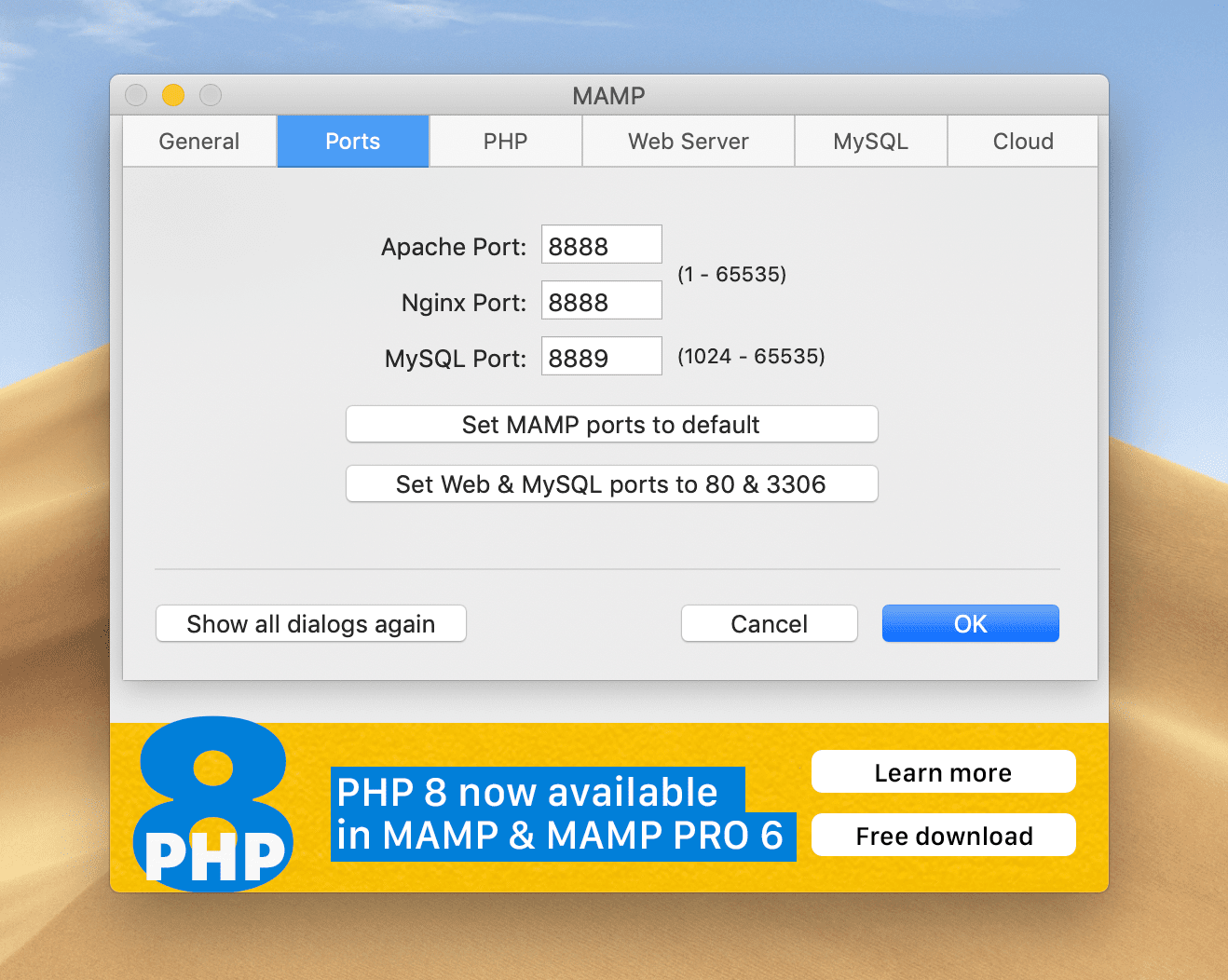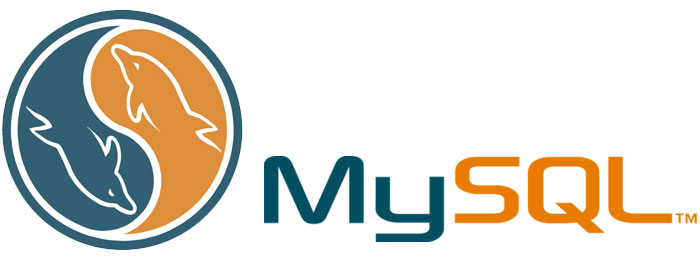Double click on the file “setupMAMPMAMPPRO4.x.exe” in your Downloads folder. The Windows Installer will guide you through the installation process. When installing MAMP, both a “C: MAMP PRO” and “C: MAMP” folder will be installed. You can ignore the “C: MAMP PRO” folder if you choose not use MAMP PRO.
MAMP is a free distribution package that makes it easy to install Apache Web Server, PHP, and MySQL. Before installing MAMP, you should turn off any other web servers and instances of MySQL you have running on your Windows machine.
- Download the latest version of MAMP:
- Run the downloaded file (e.g., MAMP_MAMP_PRO_4.1.exe) and click through the installation wizard.
- If prompted, you do not need to install MAMP PRO or Apple Bonjour.
- Accept the License Agreement.
- Leave the default for the installation directory (C:MAMP).
- Leave the default for the Start Menu folder (MAMP).
- Close the wizard when setup is finished.
- MAMP installs a local server environment in a matter of seconds on your Windows or macOS computer. MAMP comes free of charge, and is easily installed. MAMP will not compromise any existing Apache installation already running on your system.
- As a windows user I've been using MAMP Pro since the windows version was released. The one area that I was unable to resovle was getting SSL to work with my local domains. The self signed certificates never seemed to work correctly.
Running MAMP on Windows

Careful!
Be very careful to follow these steps exactly. MAMP can be finicky. If something goes wrong, often the easiest thing to do is uninstall MAMP and start the process over again.
To run MAMP...

- Navigate to C:MAMP in Windows Explorer and open MAMP.exe. If you get a security alert, allow access. You should see a window like this one: The servers (Apache Server and MySQL Server) should have automatically started. If they did not, start them by clicking on Start Servers.
- Open MAMP Preferences:
- Change the Apache port to 8888:
- Click on Open WebStart Page: The following page should open in your browser:
Class Files
- After downloading the class files, create a folder in C:MAMPhtdocs named 'Webucator' and extract your class files in that folder:
- Rename the ClassFiles folder to php:
- To test that your setup so far is correct, open your browser and navigate to http://localhost:8888/Webucator/php/. You should get a listing like this:
- Click PHPBasics, then click Demos, and then hello-world.php. You should get a page that looks like this:
Setting the MySQL Password
The PHP files use 'pwdpwd' for the MySQL root password, while the default password used in MAMP is 'root'. In your browser, navigate to http://localhost:8888/phpMyAdmin/.
Note: It is important to do these steps in the order specified.
- Click the mysql database on the left.
- Click the SQL tab at the top.
- Enter the following in the textbox under Run SQL query/queries on database mysql:
- Click Go.
- You also need to update the password in C:MAMPbinphpMyAdminconfig.inc.php. Open the file in your editor (e.g., Visual Studio Code) and change the password setting as show below to 'pwdpwd'.
Installing the poetree Database
Use phpMyAdmin to install the poetree database used in class.
- Click on the Import tab heading
- Click the Choose File button.
- Browse to the poetree-db.sql file in your class files (C:MAMPWebucatorphppoetree-dbsql).
- Click Open:
- Click the Go button on the bottom left of the page.
- You should get a Success message and poetree should be added to your list of Databases.
One Final Test

Point your browser to http://localhost:8888/Webucator/php/Database/Solutions/phppoetry.com/. If you see a page like this, you're all set:
And that's it

Happy MAMPing!
Recommended Code Editor
Visual Studio Code (Download, Install, and Set up VS Code)
While you may use a different editor or IDE, Visual Studio Code is an excellent IDE to learn to code on. It provides a nice balance of power and simplicity and it is available on Windows and Mac.
- Drupal Basics Tutorial
- Drupal Advanced
- Drupal E-Commerce
- Drupal Useful Resources
- Selected Reading
This chapter provides step-by-step procedure for Drupal installation. Before installing Drupal, the following system requirements are necessary.
System Requirements for Drupal
Database − MySQL 5.1 +
Web Server −
WAMP (Windows)
LAMP (Linux)
XAMP (Multi-platform)
MAMP (Macintosh)
Nginx
Microsoft IIS
Operating System − Cross-platform
Browser Support − IE (Internet Explorer 8+), Firefox, Google Chrome, Safari, Opera
SSL (Secure Socket Layer) − A valid security certificate is required for HTTPS
PHP Compatibility − PHP 5.2+
Download Drupal
Step 1 − Download the Drupal and copy to your web server from this link − https://www.drupal.org/project/drupal
Step 2 − Select the latest version of zip file which you want to download as shown in the following screen. The Recommended releases are the latest stable releases of either version.
Setup Wizard
It's very easy to setup Drupal on your system. The following steps describe how to setup Drupal locally on your system.
Step 1 − Download the zip file and extract it to your local computer. Rename the folder from its current name to any name of your choice to refer to your site.
Step 2 − Drupal requires MySQL database. Create a new empty database with user/password for Drupal to use. (For e.g., user as 'root' and password as 'root' or else you can set as per your choice).
Step 3 − Open your browser and navigate to your Drupal file path, you will see the first Drupal installer screen as shown in the following image. In our case the path is localhost/< Your_drupal_folder >. Select the Standard option and click Save and continue.
Step 4 − Select the default language for Drupal website.
After selecting the language, click Save and continue.
Step 5 − Go to Database configuration page. You need to enter the type of database you will be using, and other details as follows.
Database Type − Select the database type. By default, it will be MySQL.
Database name − Enter the database name for Drupal.
Database username − Enter the user name of your MySQL database.
Database password − Enter the password which you had set for MySQL Database.
When you click the ADVANCED OPTIONS, you will see the following screen −
Mamp Pro For Mac
You can fill the advanced options for the database −
Database Host − Enter the host name where your database is located.
Database port − Enter the database port.
Table Prefix − It is used to add prefix in the database tables, which helps to run multiple sites on the same database.
After filling all the information, click the Save and continue button.
Step 6 − The installation process starts on your machine.
Step 7 − The Configure site page appears on the screen −
It contains the following fields −
Site name − The name that you want to give to your site.
Site e-mail address − The e-mail address to which automated e-mails will be sent.
Username, Email-address and Password − These are all administrative details used for the maintenance account.
Mamp Per Windows 8
You need to enter all these fields and click Save and continue.
Step 8 − The following page indicating that your Drupal installation is successful will appear on your screen.
Step 9 − Click the Visit your new site link as shown in this image.
Step 10 − Finally, the newly installed Drupal homepage appears on your screen as seen in the preceding image.




